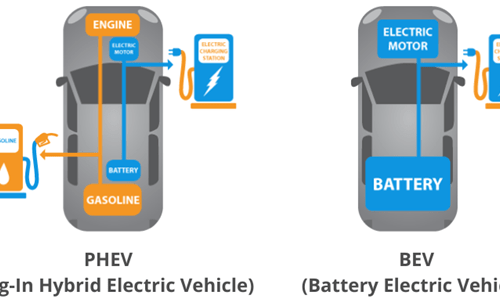
The Role of Cities in New Mobility

Cities, and more broadly metropolitan areas, are the laboratories where many next-generation mobility concepts and technologies are being tested, and where the transformation of transportation will first become evident.
Metropolitan areas are key to the success of new mobility. They are the centers where people choose to coexist in close proximity to take advantage of the services and other benefits, such as culture and entertainment, that this coexistence enables. Because of the advantages metropolitan areas offer, their population is anticipated to rise dramatically. Urban populations surpassed rural populations just before 2010. Since that time, urban populations have continued to grow at the expense of rural populations. According to the United Nations Population Division, by 2050 the urban population will represent almost 70% of the earth’s total population. By then we will have at least 40 megacities and several hundred cities whose population will be at least 1 million people. Even with the movement away from city centers that is now observed and attributed to the pandemic, and the recently adopted work from home practices, metropolitan areas will remain a pole of attraction because of everything they offer. People may move to suburbs as they seek larger residences to accommodate their home-office, or to second-tier cities where they can enjoy lower cost of living, but it is unlikely they will permanently move to rural areas. Because they will hold the largest percentage of the earth’s population, cities have the right scale and complexity to be the laboratories of next-generation mobility, influence its development, and realize the impact of its transformative power.
Most cities are unprepared to address the transportation problems they will face as a result of growing urbanization. In a recent report, McKinsey identifies the characteristics of 50 “superstar” cities. These cities account for 8% of the global population and 21% of the global GDP; 45% of them are homes to corporations with more than $1 billion in annual revenues. Even the cities in this set already face growing urban transportation problems because they have underinvested in their transportation infrastructures. Megacities such as New York, São Paulo, Mexico City, and Mumbai find themselves in this predicament today. Most cities around the world, including many U.S. cities like New York, are quickly realizing the multi-billion-dollar price tag required just to upgrade their transportation and communication infrastructures to the levels required by next-generation mobility. In the analysis Amazon conducted while trying to determine where to place the company’s second headquarters, transportation infrastructure quality was one of the selection criteria. Few are the cities that today make transportation a top priority and are investing heavily in intelligent transportation.
A city’s characteristics impact its population’s transportation preferences. Cities, and by extension metropolitan areas, develop and grow either vertically or horizontally. It may develop this way by choice, as is the case with many new cities being built in Asia, or by necessity, because of land constraints. Cities like Lusail in Qatar or King Abdullah Economic City in Saudi Arabia are vertical by design. Cities like Manhattan, San Francisco, Berlin, Singapore, and Hong Kong have developed vertically because of land constraints. Vertical cities are characterized by high population densities, require smaller transportation infrastructures to accommodate their populations, and a higher percent of their populations, particularly in cities with younger demographics, tends to embrace walking and micromobility.
A horizontal city develops and expands outward. It is characterized by lower population density, and often lacks a master development plan. Horizontal cities tend to evolve in response to developers, rather than urban planners. Metropolitan areas like Los Angeles, Atlanta, Paris, Tokyo and Bangkok are horizontal. As a consequence of this evolution, their traffic patterns develop differently. Transportation planning becomes harder and more expensive. We find that horizontal city populations tend to prefer privately owned vehicles and public transportation modalities for their mobility.
In Transportation Transformation I explain that as we enter the second phase of next-generation mobility, metropolitan areas must determine the role they want to play as transportation transforms around them. This will require each metropolitan area to:
- Determine where transportation falls in relation to the other priorities such as social services, public safety, and low-income housing and how it relates to problems such as congestion, and pollution.
- Establish its transportation state as determined by its Transportation Wallet and use it as a baseline to measure its improvement over a time horizon it sets.
- Identify the transportation goal-state it wants to achieve.
Before experiencing the benefits of new mobility, including those brought by the use of various types of autonomous vehicles that will likely be deployed during this second phase, cities themselves will need to transform. The role the city wants to play in new mobility together with the state of its transportation, as provided by the Transportation Wallet, will help it determine the transformation(s) it must undertake compared to the transformations it wants to undertake.
How could cities transform? Using business and technology innovation as the two dimensions along which to consider transforming, we see three potential outcomes (and dozens of potential others across this two-dimensional space):
- As a result of transforming primarily along the technology dimension, a city becomes a smart infrastructure provider. Today close to 100 cities globally are determining the role that privately-owned vehicles and autonomous vehicles will play in their areas and how those will impact their transportation infrastructures.
- As a result of transforming primarily along the business dimension, because their transportation infrastructures are already advanced and plans for additional investments in place, a city becomes a transportation coordinator enabling it to improve the utilization and monetization of its transportation infrastructure. Cities such as Berlin and Shanghai are good examples.
- As a result of simultaneously transforming along both dimensions, a city becomes a transportation orchestrator and is able to optimize the operation of all mobility resources. This is the approach taken by Singapore.
As was shown here, even for cities with similar characteristics such as Berlin and Frankfurt, the undertaking of a particular transformation could yield different results. These results will depend on the type of private-public partnerships established between city, automakers, and mobility services companies and the transformations that the companies of these other two constituencies decide to introduce. Moreover, a particular transformation applied to the city’s core could yield different results than when applied to the entire metro region.
We foresee three possible outcome scenarios depending on the metropolitan area’s characteristics and the undertaken transformations. Metropolitan areas developed around horizontal cities, with low population density, such as those found mostly in North America, because of the high private vehicle ownership that characterizes them, will likely choose to transform to smart transportation infrastructure providers. For such areas we project a balanced co-existence between privately-owned vehicles and a broad variety of on-demand mobility services for passenger mobility and goods delivery with a diminishing role of public transportation and enduring congestion problems. The level of pollution in these areas will depend on the emission regulation they choose to enact.
Metropolitan areas developed around vertical cities, with high population density, such as those found mostly in Europe and parts of Asia, could transform to become transportation coordinators. Many of these areas have been investing heavily in their transportation infrastructures, including their public transportation systems. For such areas we project a strengthening collaboration between public transportation systems and private mobility services fleets, offering services using automated and autonomous vehicles when available and possible, with decreasing private vehicle ownership.
Finally, we project that a smaller set of metropolitan areas will transform to become transportation orchestrators. In those areas, there is already a significant level of coordination among public and private transportation entities. As their transformation completes, mobility will be offered as a service using advanced transportation networks comprising of automated and autonomous vehicles. The use of privately-owned vehicles will be banned from increasingly larger geofenced areas. Metropolitan areas will be the laboratories of new mobility. They must understand their current transportation state, define their goal state, select the transformation(s) they will need to undertake to reach that state, and lead in establishing public-private partnerships with automakers and mobility services companies in order to increase their probability of success. Otherwise, they run the risk of being irreversibly disrupted.




Leave a Reply